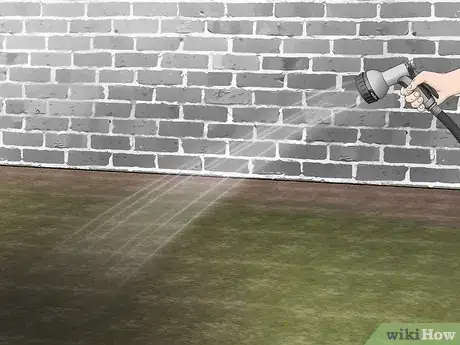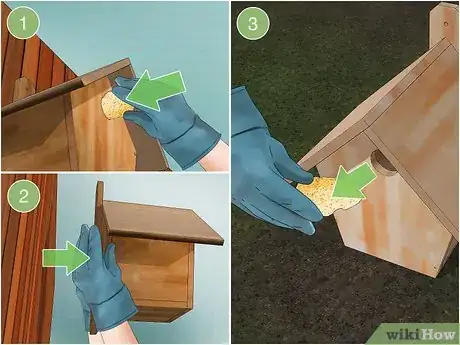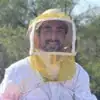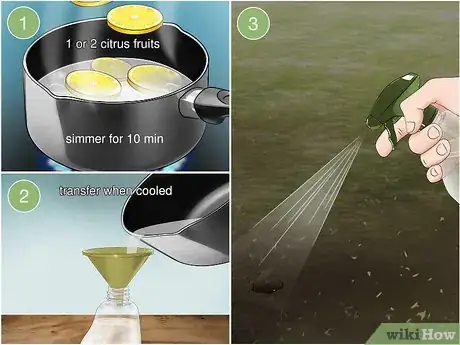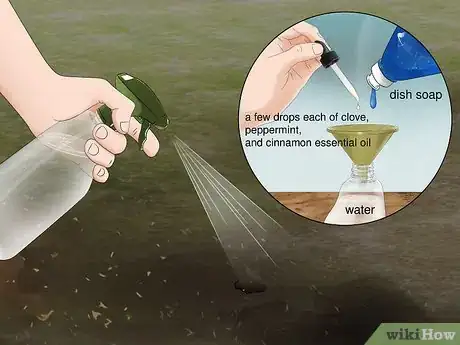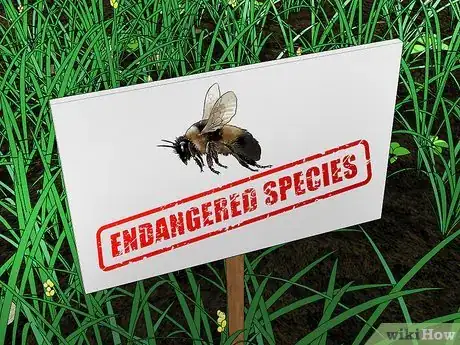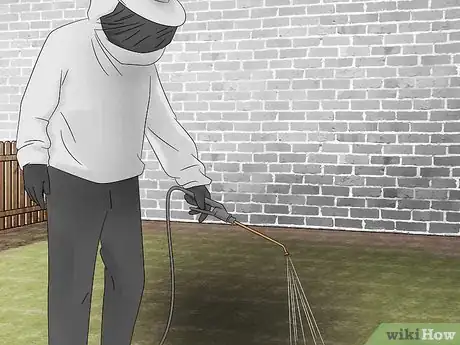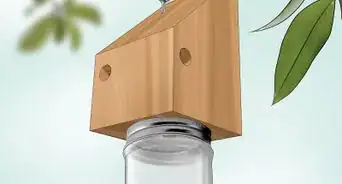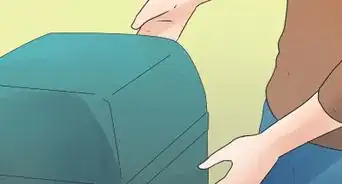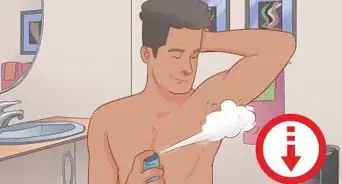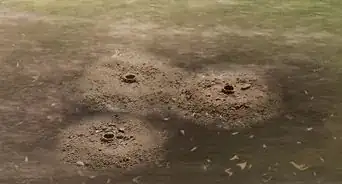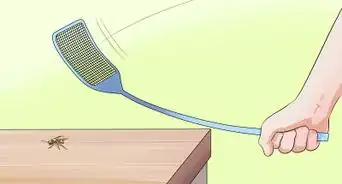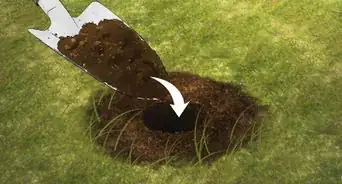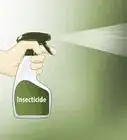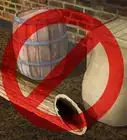This article was co-authored by Steve Downs and by wikiHow staff writer, Jessica Gibson. Steve Downs is a Live Honey Bee Removal Specialist, Honey bee Preservationist, and the Owner of Beecasso Live Bee Removal Inc, a licensed bee removal and relocation business based in the Los Angeles, California metro area. Steve has over 20 years of humane bee capturing and bee removal experience for both commercial and residential locations. Working with beekeepers, agriculturalists, and bee hobbyists, Steve sets up bee hives throughout the Los Angeles area and promotes the survival of bees. He has a passion for honeybee preservation and has created his own Beecasso sanctuary where rescued bee hives are relocated and preserved.
There are 10 references cited in this article, which can be found at the bottom of the page.
This article has been viewed 10,419 times.
Bumble bees are top pollinators and they're pretty cute, but if you or a loved one has an allergy, bumble bees can be problematic. Instead of exterminating the bees with harsh insecticides, try natural solutions using things you probably already have around your home. If you change the habitat, bumble bees usually move on pretty quickly. Here are some effective strategies listed from gentlest to harshest to get you started!
Steps
Expert Q&A
-
QuestionWhat are the top safety tips you have for getting away from a bee attack?
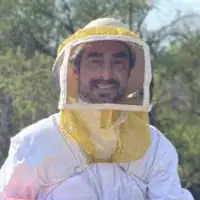 Steve DownsSteve Downs is a Live Honey Bee Removal Specialist, Honey bee Preservationist, and the Owner of Beecasso Live Bee Removal Inc, a licensed bee removal and relocation business based in the Los Angeles, California metro area. Steve has over 20 years of humane bee capturing and bee removal experience for both commercial and residential locations. Working with beekeepers, agriculturalists, and bee hobbyists, Steve sets up bee hives throughout the Los Angeles area and promotes the survival of bees. He has a passion for honeybee preservation and has created his own Beecasso sanctuary where rescued bee hives are relocated and preserved.
Steve DownsSteve Downs is a Live Honey Bee Removal Specialist, Honey bee Preservationist, and the Owner of Beecasso Live Bee Removal Inc, a licensed bee removal and relocation business based in the Los Angeles, California metro area. Steve has over 20 years of humane bee capturing and bee removal experience for both commercial and residential locations. Working with beekeepers, agriculturalists, and bee hobbyists, Steve sets up bee hives throughout the Los Angeles area and promotes the survival of bees. He has a passion for honeybee preservation and has created his own Beecasso sanctuary where rescued bee hives are relocated and preserved.
Live Bee Removal Specialist The number one thing is don't panic. Get as far away from the hive as fast as you can, since the bees will generally head back to the hive once the threat (you) are far enough away. Try your best not to swat at them, or squash them on your skin or body as this will release more pheromones onto your skin, and the remaining bees will attack further.
The number one thing is don't panic. Get as far away from the hive as fast as you can, since the bees will generally head back to the hive once the threat (you) are far enough away. Try your best not to swat at them, or squash them on your skin or body as this will release more pheromones onto your skin, and the remaining bees will attack further.
Warnings
- Never pour gasoline or bleach into the bumble bees' nests. It's a flammable hazard that also poisons your soil.⧼thumbs_response⧽
References
- ↑ https://www.bumblebeeconservation.org/bumblebee-nests/
- ↑ https://www.bumblebeeconservation.org/bumblebee-nests/
- ↑ https://www.bumblebeeconservation.org/bumblebee-nests/
- ↑ https://www.nature.scot/guidance-bumble-bees-natural-mortality
- ↑ https://www.bumblebeeconservation.org/bumblebee-nests/
- ↑ https://www.honeybeesuite.com/how-to-move-a-bumble-bee-nest-2/
- ↑ https://extension.umn.edu/yard-and-garden-insects/wasps-and-bees#treating-or-removing-honey-bee-and-bumble-bee-nests-1465461
- ↑ https://extension.umn.edu/yard-and-garden-insects/wasps-and-bees#treating-or-removing-honey-bee-and-bumble-bee-nests-1465461
- ↑ Steve Downs. Live Bee Removal Specialist. Expert Interview. 23 February 2020.
- ↑ https://youtu.be/ZWoCtJnN86Y?t=57
- ↑ https://pestguide.org/info/black-bumble-bee
- ↑ Steve Downs. Live Bee Removal Specialist. Expert Interview. 23 February 2020.
- ↑ https://youtu.be/E7WgjQPDomE?t=87
- ↑ https://extension.umn.edu/yard-and-garden-insects/wasps-and-bees
- ↑ Steve Downs. Live Bee Removal Specialist. Expert Interview. 23 February 2020.
- ↑ https://www.homeadvisor.com/cost/environmental-safety/bee-removal/
- ↑ https://extension.umn.edu/yard-and-garden-insects/wasps-and-bees#treating-or-removing-honey-bee-and-bumble-bee-nests-1465461



